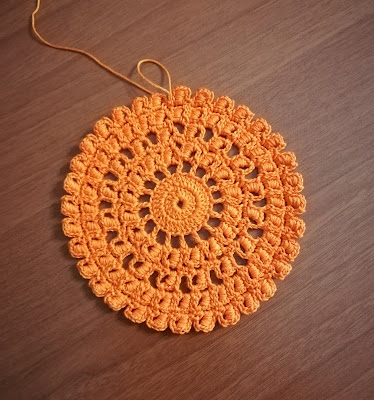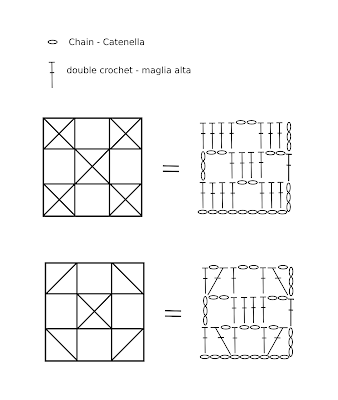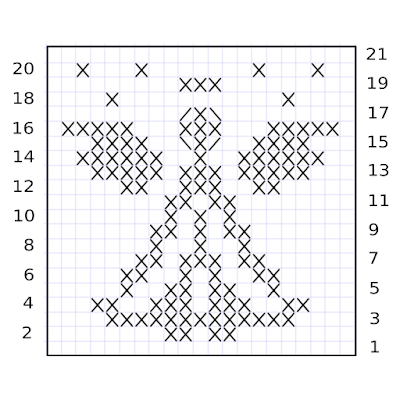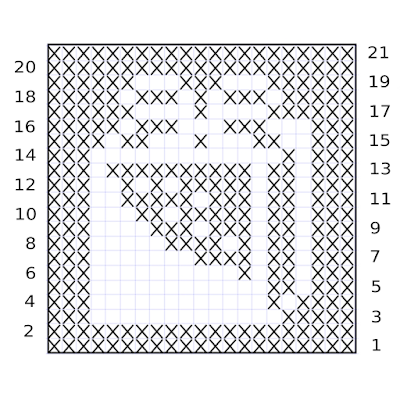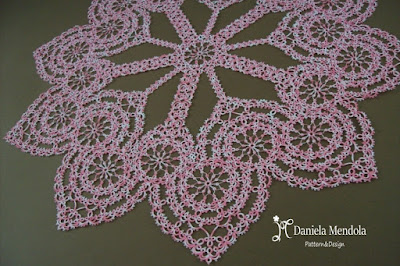The tension is very important in every handmade technique that involves any type of yarn, especially the tatting.
But what do we mean when we talk about tension?
Tension is our particular way to pull, to stretch, to wrap, to tighten the thread during the working process.
Did you ever happen to follow to the letter the instructions of a pattern, but getting a different result from the one you wanted?
Don't worry! Probably you didn't do anything wrong, it depends only on the tension applied to the processing.
A ring that is not completely closed or too tight, a chain that is too long or a bit shorter, and that's how the result changes, compromising the pattern that we like so much.
Applying the right tension is essential for getting a good work, but it is not always easy. We realize it when we work every single knot, but above all working large rings and long chains.
Working the motif you see in the picture, although very simple as a pattern, was not easy: the central ring is very large and the chains around must have the same length, otherwise the mistake would be too evident.
So, how can we work well, and without too many problems, on patterns like this that test our technique?
Naturally each of us has his own style, a personal approach to work, but I think that some tips are worth as point of consideration a little for everyone.
For example, when I have to close a very large ring, I hold the chain of knots firmly between my fingers and pull the working thread very slowly; I press the knots between my fingers to prevent them from tightening too much and I slide them onto the thread until the ring is closed, then pull a little more the thread and check that there is no space between the first and the last knot.
For very long chains, I always check that the length corresponds to that required by the pattern before fixing it or making the next ring, if it is needed it's very easy to adjust its length.
As tension is a peculiarity of our work style, we can not change it or force it, we can only make it more regular and harmonious as possible by a lot of practice and patience.
La tensione è molto importante in ogni tecnica artigianale che coinvolge qualsiasi tipo di filato, in particolare il chiacchierino.
Ma cosa intendiamo quando parliamo di tensione?
La tensione è il nostro particolare modo di tirare, tendere, avvolgere, stringere il filo durante il processo di lavorazione.
Vi è mai capitato di seguire alla lettera le istruzioni di uno schema, ma ottenere un risultato diverso da quello desiderato?
Non preoccupatevi! Probabilmente non avete fatto nulla di sbagliato, dipende solo dalla tensione applicata alla lavorazione.
Un anello non completamente chiuso o troppo stretto, un arco troppo lungo o un po' più corto, ed ecco che il risultato cambia compromettendo il modello che ci piace tanto.
Applicare la giusta tensione è fondamentale per ottenere un buon lavoro, ma non sempre è facile. Ce ne accorgiamo quando lavoriamo ogni singolo nodino, ma soprattutto con anelli e archi di grandi dimensioni.
Lavorare il motivo che vedete in foto, seppure molto semplice come schema, non è stato facile: l'anello centrale è molto grande e gli archi intorno devono avere tutti la stessa lunghezza, in caso contrario l'errore sarebbe troppo evidente.
E allora, come possiamo lavorare bene, e senza troppi problemi, su schemi come questo che mettono alla prova la nostra tecnica?
Naturalmente ognuno di noi ha il proprio stile, un personale approccio al lavoro, ma penso che alcuni accorgimenti valgano come spunti di riflessione un po' per tutti.
Io, per esempio, quando devo chiudere un anello molto grande, tengo la catena di nodini ben salda tra le dita e tiro il filo portanodi molto lentamente; schiaccio i nodini tra le dita per evitare che si stringano troppo e li faccio scorrere sul filo fino a quando l'anello non è chiuso, poi tiro ancora un po' il filo portanodi e controllo che non rimanga spazio tra il primo e l'ultimo nodino.
Per archi molto lunghi, controllo sempre che la lunghezza corrisponda a quella richiesta dallo schema prima di fissarlo o procedere alla lavorazione dell'anello successivo, in caso contrario è molto semplice regolarne la lunghezza.
Essendo la tensione una peculiarità del nostro stile di lavoro, non possiamo cambiarla o forzarla, possiamo solo renderla il più possibile regolare e armoniosa con tanto esercizio e tanta pazienza.

